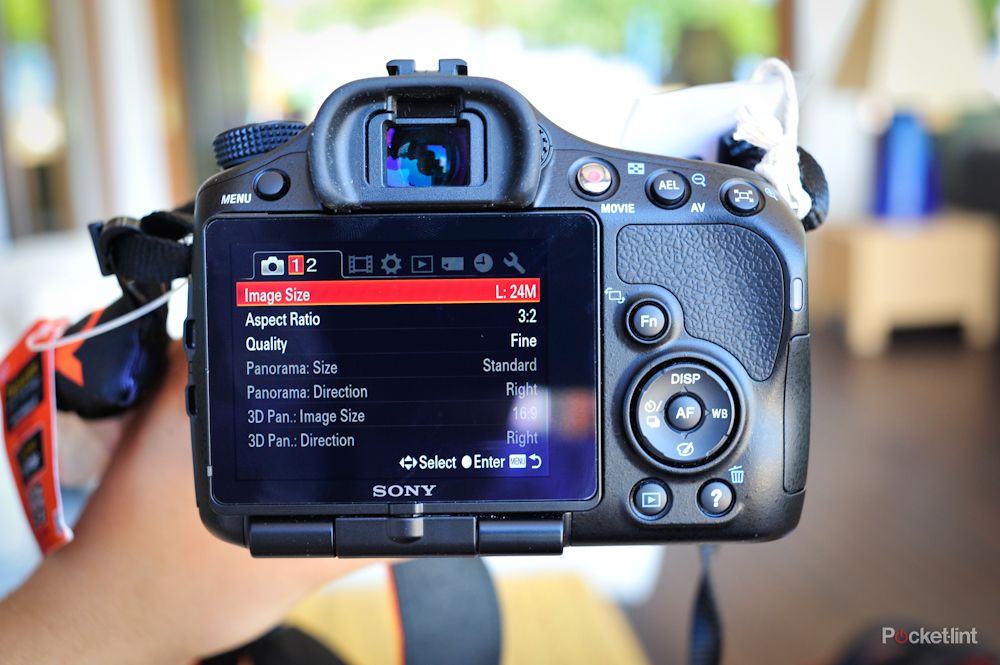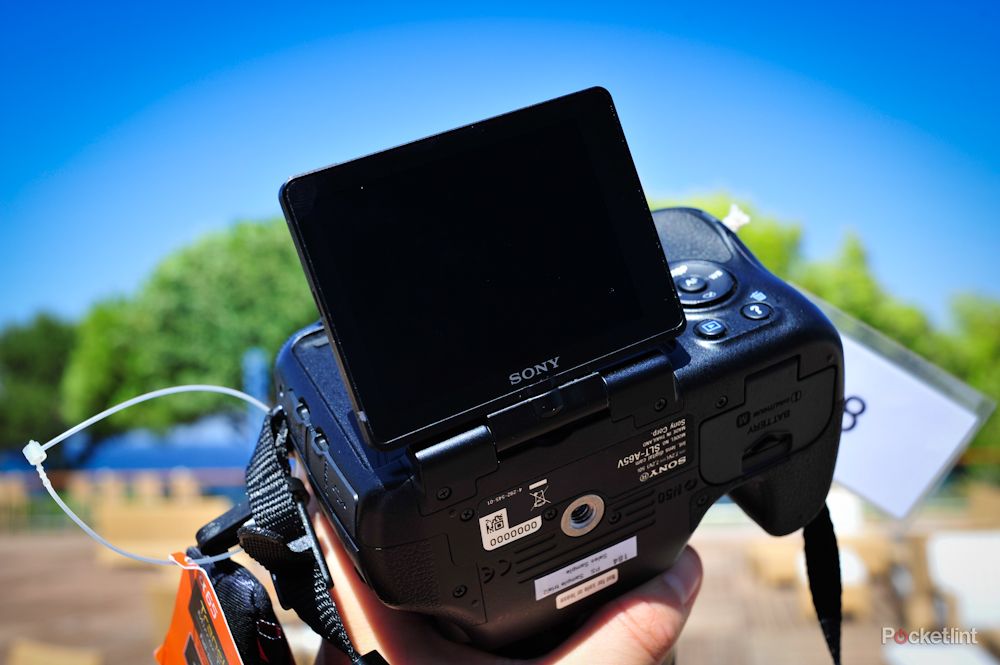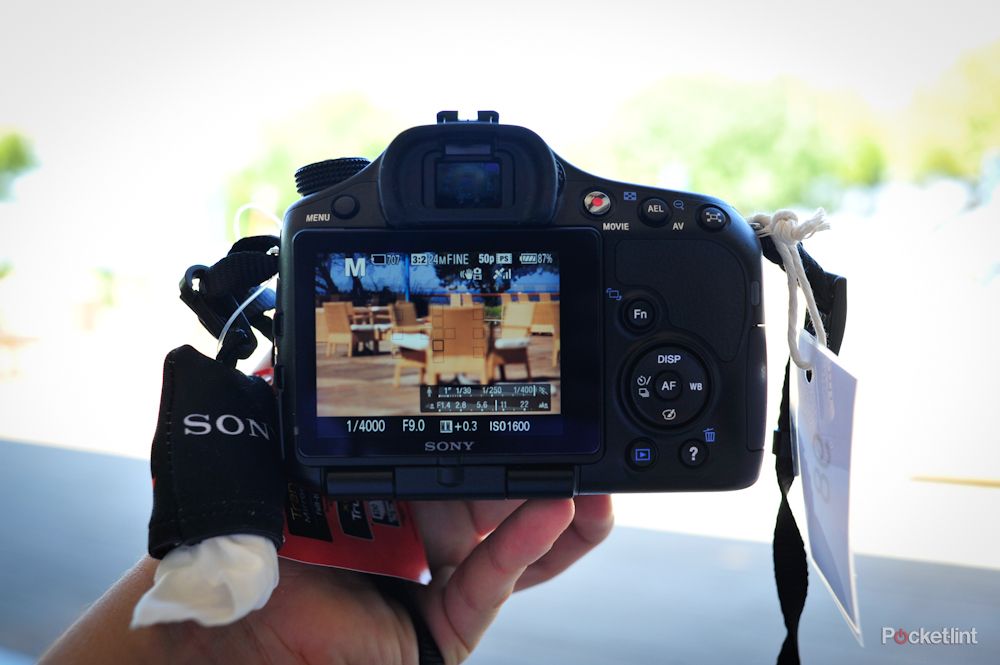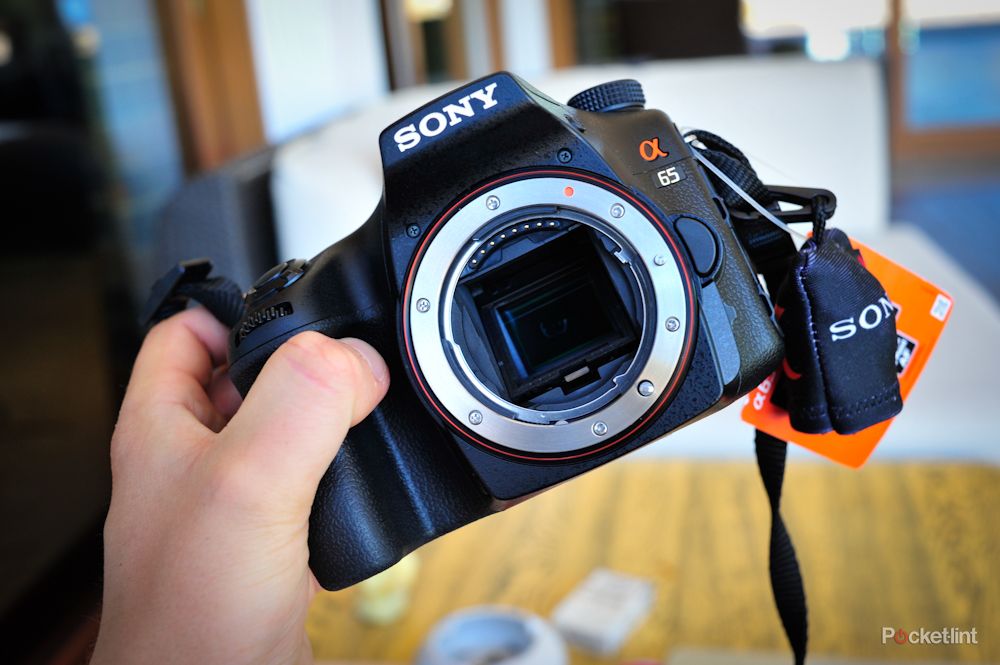Of the two new Alpha cameras recently announced by Sony it was the A65 that interested us the most. While it isn't the magnesium-alloy bodied flagship A77, it boasts all the same features that we think will make a major difference to your photography and costs less. Features like the same sensor and processor as well as finder and just a two frame per second drop in shooting speed, we think make the A65 the better choice.
Our quick take
After a good few days with the A65 we are definitely convinced by what Sony is trying to do with the Alpha brand. Adding in so many megapixels and features like an OLED screen definitely separates the A65 and A77 from the competition.
Our main problem with the A65 is actually the A77. Because the A65 is so good at what it does, the idea of spending £300 more on just a couple of extra features seems stupid. Instead, why not just pack everything into just one camera, and charge £900 for it. Going down this route could even tempt people away from the traditional DSLR brands like Canon and Nikon.
All this aside, there is no doubt that the A65 is a good camera. It performed very well in both stills and video, while being ergonomically sound and decent value, a difficult combination to get right. Those with Sony systems who want to take their photography further should most definitely take a look at this camera, it is a big leap up on everything else Sony makes, bar its professional full-frame setups.
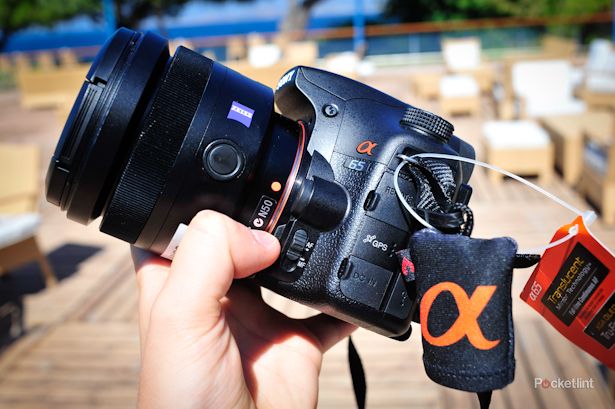
First Look
| FOR | AGAINST |
|---|---|
|
|
Announced earlier this week, Pocket-lint was on hand to put the new camera through its paces, shooting video and stills in varied scenarios, all the same time being as pernickity and button pressing obsessed as possible.
Build and design
The Alpha A65, unlike its more expensive A77 brother, doesn't feature a proper magnesium-alloy body, it is instead made of polycarbonate. Thankfully the A65 doesn't feel too plasticky and has adopted much of the feel of a proper prosumer camera but without all the expense.
The ergonomics of the A65 also work quite well, we would have liked to see the dual scroll wheels found on the A77 as well as the joystick, but you can't have everything. It definitely sits comfortably in the hand and with a hefty 85mm F/1.4 lens on the front, didn't feel unbalanced or difficult to use.
Access to functions is carried out via an intuitive set of buttons. The placing of controls like the digital zoom, aperture control and movie mode button are all within thumbs reach. This is a good bit of camera design and means you can switch quickly between functions on the fly. Thanks to the OLED finder you can see exactly what you are doing without taking your eye away from snapping. Having a customisable function button also near your thumb is particularly useful.
Another nice addition is being able to switch to 10fps mode and sweep panorama via the function wheel on the top left. This means you don't have to negotiate menus to set-up the camera for different shooting styles. The AF/MF switch also flicks easily up and down, allowing you to go straight into manual focus should you so desire.
Just about every camera range now has a tilt screen model. It is a design addition that whilst we personally can't see a massive need for, we know many do enjoy. The two-way tilter on the A65 gives you high or low angle viewing, the A77 has a three-way screen by comparison.
The A77 is around £1150 for body only, putting it in line with some seriously stiff prosumer competition. It doesn't quite cut it build-wise against them. The A65 however, priced in at £800 body only is crammed full of features for the price and feels better made than a lot out there.
Shooting and video
The meat of any camera is obviously in the shooting. Nailing exactly how a camera snaps is extremely difficult. It usually comes out of a combination of build, ergonomics, speed and the finder, all of which come together to create a good or bad shooting experience.
Sticking a huge number of megapixels on a sensor and giving it a long name like Exmor APS HD CMOS might tempt the general consumer, but it by no means equals a good camera. So when we heard 24.3 megapixels were going to be crammed onto such a small sensor, we immediately imagined Sony bringing back its signature noise issues. Thankfully however whatever ghosts the company had hiding in the noise cupboard appear to have been vanquished. The sensor in the A65 is clean and copes very well in low light, even up to ISO 3200. After that things do start to get a bit difficult. Images are, however, very well balanced and colours saturated, but not overly-punchy.
Unfortunately the firmware build on the test A65 units we used isn't final. Because of this, Sony has requested that we don't show the photos we took with the test unit. We'll have to reserve some of the final judgements on performance and image quality until we get final review hardware in to test.
Having an electronic viewfinder adds quite a bit to the shooting experience, once you get used to it. Admittedly it doesn't feel as direct as the classic analogue mirror combo, but being able to see exactly how much noise, colour or picture style is being applied before you take a shot is really useful. It means you don't fill memory cards with exposure mistakes and take a lot more time to get a shot right before pressing the shutter. We think this could be a massive benefit to those looking to take their photography further, precisely what the A65 is designed for.
For the purist however and those used to shooting with conventional finders, it feels odd and remained feeling odd for the duration of our shooting. That said, good on Sony for trying to innovate in a market where most of the competition keeps playing it safe. With this new generation of SLT cameras, Sony looks to be going strong.
Video-wise, the combination of 1080p and the AVCHD 2.0 codec results in some very nice looking footage. Full 50p frame rates keep things smooth and all the colour balance from stills translates over very well. Motion did appear to have the odd issue when we were really throwing the camera about but other than that there are no qualms on the video front; it is good 1080p DSLR-style footage.
To recap
If you use Sony lenses, are an amateur and considering an upgrade, try the A65

